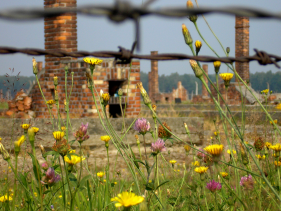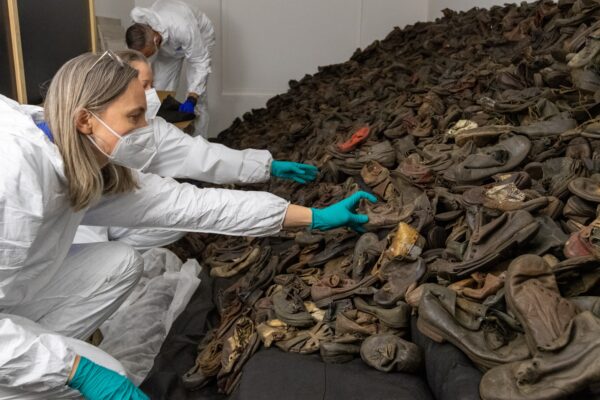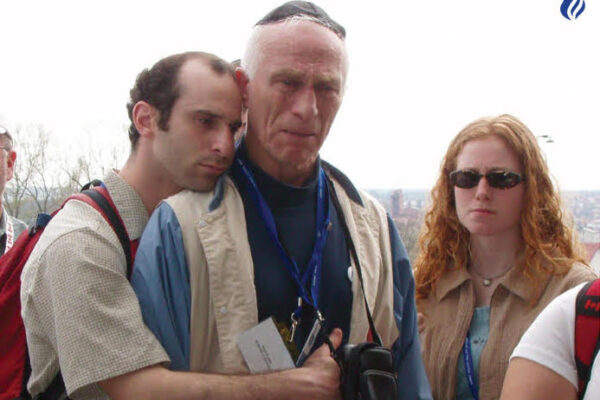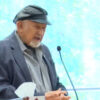
On June 14, 1940, the Auschwitz concentration camp received its first large shipment of prisoners – 728 political detainees transferred from both Dachau, in Germany, and a Nazi prison in Tarnow, in occupied Poland. Twenty of them are believed to have been Jews, with the majority Roman Catholics, resistance members and others.
These early arrivals had been preceded by a tiny contingent of recidivist criminal prisoners, who had been brought in to help run the new camp. They were initially housed in a building at the site that had formerly belonged to the Polish Tobacco Monopoly.
Auschwitz was one of six “dedicated” death camps, and from the time it began operating until its liberation, on January 27, 1945, it is estimated that up to 1.3 million people, some 90 percent of them Jews, were murdered there. (What distinguished the death camps from the overall network of some 2,000 prison facilities belonging to the Third Reich was the fact they were under the direct control of the SS.)
More precise numbers are not available because throughout Auschwitz’s existence, the Germans, though generally punctilious in their record-keeping, did not bother to register new arrivals to the camp who were immediately selected for liquidation. Hence, names and other identifying information were recorded only for those who were admitted, and put to work, at Auschwitz.
‘The Jewish Problem reached its zenith’
“Auschwitz” is the German rendering of the Polish “Oswiecim,” the name of the 900-year-old town in Upper Silesia outside which the SS decided in January 1940 to build a camp on the site of an old Polish army barracks. On the eve of the war, the town had some 12,000 residents, of whom an estimated 5,000 were Jewish.
Oswiecim , situated some 50 kilometers southwest of Krakow, was in the part of Poland that borders on both Slovakia and the Czech Republic that was annexed by Nazi Germany after its initial occupation of the country in September 1939.
The first part of Auschwitz, later referred to as Auschwitz I, covered an area of some 40 square kms. After Germany invaded the Soviet Union, beginning in June 1941, the camp was too small to hold the vastly increased numbers of deportees, who comprised both prisoners of war and, principally, Jews. That autumn, work began on Auschwitz II, better known as Birkenau-Auschwitz.
As a slick German magazine about life in occupied Poland, published in 1944, explained, the conquerors encountered millions of Jews on their arrival: “Here, in the breeding ground of modern World Jewry, the Jewish Problem reached its zenith. . . . We had a moral obligation to wipe out the breeding places of the most horrendous, the most inhuman, and the most beastly vice that, arising from Poland, infested the whole world. It was a task which, in its fulfillment, was meant to bring salvation to the whole of humanity.”
Birkenau-Auschwitz, thus, was created explicitly for murder. Its facilities included four large gas chamber-crematorium complexes, which employed Zyklon-B, a poison gas originally developed as a pesticide.
Auschwitz III, the third sub-camp, also known as Auschwitz-Monowitz, was constructed specifically to house and provide labor to a rubber plant owned by the chemical conglomerate I.G. Farben.
The largest number of Jews who met their deaths in Auschwitz was from Hungary, where deportations began only in April 1944. Over the next four months, approximately 440,000 Jews were deported from Hungary. The vast majority of them were sent to Auschwitz, with about three-quarters of those sent immediately to the gas chambers. The remainder were sent to forced labor, including at Monowitz. There, when a worker became too ill to continue his duties, he or she would be killed with a lethal injection.
Additionally, the region around Auschwitz had 45 satellite camps, a majority of which also held armament plants, and housed the slave laborers who worked in them.
The Auschwitz complex remained in operation until mid-January 1945, when defeat was in sight, and Heinrich Himmler ordered their evacuation. In death marches westward in the direction of Germany, 58,000 were driven from Auschwitz.
When the Red Army liberated the camp on January, it found about 7,000 prisoners, still alive but too sickly to have joined the march.
Originally published HERE







